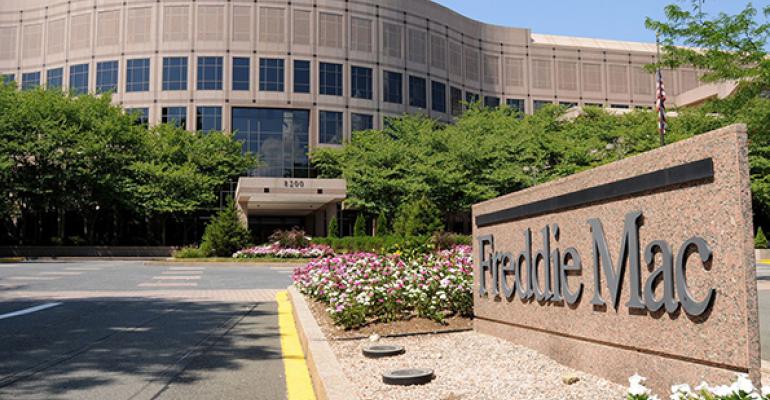(Bloomberg View)—This was supposed to be the year when the U.S. government would finally address one of the biggest pieces of unfinished business from the 2008 financial crisis: reforming Fannie Mae and Freddie Mac, the quasi-state entities that dominate the U.S. mortgage market.
Unfortunately, the Trump administration’s actions so far suggest it’s unwilling or unable to handle the task.
The collapse of the entities during the financial crisis offers a case study on how public-private partnerships can go wrong. Mandated by Congress to promote home ownership, they operated as privately owned corporations that bought and guaranteed mortgage loans. They delivered big profits for private shareholders, thanks in large part to the market’s assumption that the government would bail them out in a crisis. In 2008, that assumption proved correct: Amid heavy losses, the Treasury had to step in with a $187 billion capital injection and put the entities into a government conservatorship.
The conservatorship was meant to be temporary. To that end, as of last year, it had a few key features. All profits were swept up and delivered to the Treasury (which has gotten back much more than the $187 billion it put in), and the companies’ own capital was supposed to be run down to zero in the first quarter of 2018. The lack of capital wouldn’t be dangerous, because Fannie and Freddie would still have access to $258 billion in emergency funds from Treasury. It was intended as a prod to Congress to pursue a broader reform of the housing finance system.
Now, however, the Republican tax reform has complicated things. By lowering the corporate tax rate, it has also lowered the value of an asset sitting on the balance sheets of Fannie and Freddie: A so-called deferred tax asset, which reflects their ability to take past losses as a deduction against future profits. Because future tax rates will be lower, this asset, currently valued at about $45 billion, is also worth less. So when the companies report their financial results for 2017, they will likely have to record a loss, which — though entirely an artifact of accounting — could require them to tap their Treasury credit line.
To reduce the risk that the accounting adjustment will be perceived as another “bailout” of Fannie and Freddie, Treasury last month changed the terms of the conservatorship. Now, the two companies will be allowed to keep some $3 billion in equity capital each. This may help avert further draws on their credit lines, but it will also reduce the incentive to move ahead with the broader reform, contradicting Treasury Secretary Steven Mnuchin’s statement that “comprehensive housing finance reform is a top priority for 2018.” This is an unfortunate outcome, given that the status quo is far from ideal, with ample inefficiencies and perverse incentives.
Although the current duopoly is much healthier than in 2008 thanks to fee increases and tighter lending standards, the current system suffers from added costs and unhealthy competition. For one, each entity must have its own costly management structure. Worse, the companies have an incentive to engage in a race to the bottom, seeking to gain market share by loosening lending standards -- which they do in subtle ways by adjusting the terms of their guarantees. In a 2016 report, the Federal Housing Finance Agency noted that such “competitive pressures” had already reduced guarantee fees.
A better approach would be to merge Fannie and Freddie into a single government guarantor, which could transfer risk to the private sector by issuing securities. The government has already taken a step in this direction, with its plan to have the two entities issue a single, standardized mortgage security by the first quarter of 2019. A single guarantor, solely responsible to taxpayers, would be the right foundation for a new system that could take on the crisis of housing affordability while avoiding ill-considered risks. It would certainly be an improvement over the alternative of recapitalizing Fannie and Freddie and returning ownership to private shareholders, which would merely re-create the system that got us into this mess in the first place.
The conservatorship of 2008 was supposed to be a “time out,” a brief period before comprehensive reform was instituted. Instead, here we are, nearly a decade after the crisis, with no progress made. Members of Congress from both parties should push Treasury to be more ambitious.
This column does not necessarily reflect the opinion of the editorial board or Bloomberg LP and its owners.
Richard Koss is an economic and real estate consultant and adjunct professor at the Carey School of Business at Johns Hopkins University. Previously, he was head of capital markets research at Fannie Mae.
To contact the author of this story: Richard Koss at [email protected] To contact the editor responsible for this story: Mark Whitehouse at [email protected]
For more columns from Bloomberg View, visit Bloomberg view
COPYRIGHT
© 2018 Bloomberg L.P

